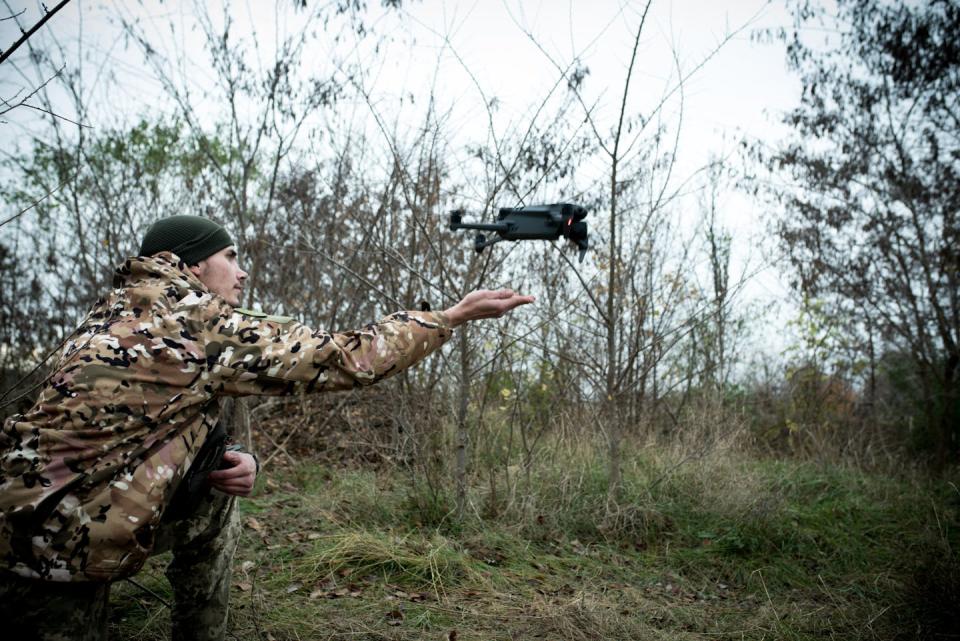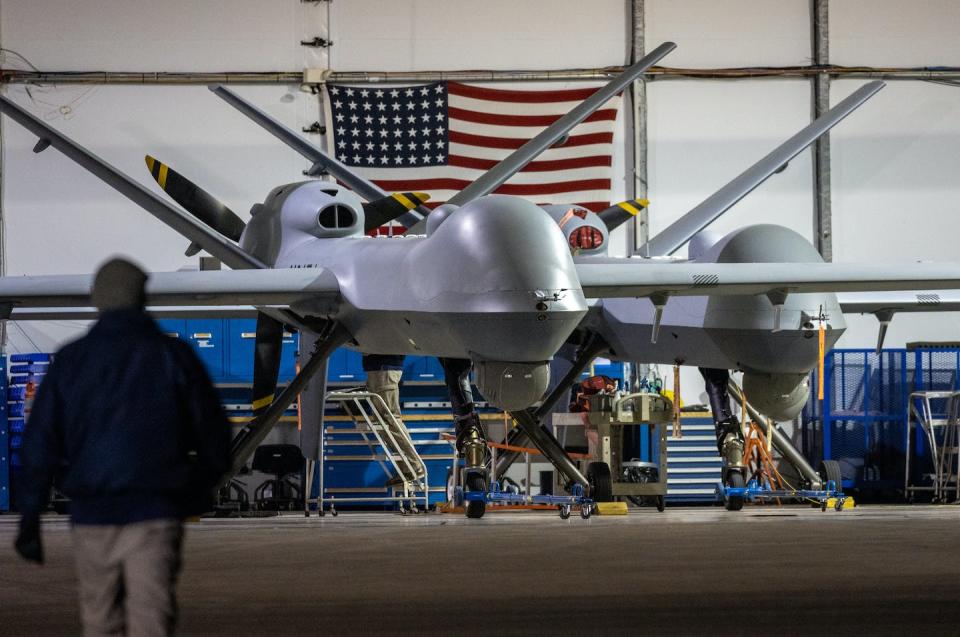Loud explosions shake the evening sky. Streaks of light resemble comets. Rockets rain down. People are taking cover downstairs. The wounded are carried on stretchers, the dead are buried.
That’s daily life in Ukraine, where unmanned vehicles known as drones litter the skies in an endless video game-esque – but actually very real – war with Russia.
Both Russia and Ukraine use drones in this war to, among other things, locate remote targets and drop bombs.
Today, drones are used in several other conflicts, but they are also used to deliver packages, track the weather, drop pesticides, and entertain drone hobbyists.
Welcome to the world of drones. They range from small consumer quadcopters to remotely piloted fighter planes – and all types are used by militaries around the world.
As a scholar of public diplomacy and foreign policy – and a former United States Assistant Secretary of State for Public Diplomacy and Public Affairs – I know how important it is for people to understand drones and their proliferation, given the risks posed by war, terrorism and accidental incidents. drone collisions in today’s world.

A buying wave
The US is among more than a hundred countries that use drones in times of conflict.
Terrorists are also known to use drones because they are relatively cheap weapons with a high degree of civilian damage.
More than 5 million consumer drones were shipped worldwide in 2020 and this is expected to exceed 7 million by 2025.
Drone sales increased by 57% globally between 2021 and 2022.
With the exponential increase in drone purchases, there are few restrictions on buyers, creating a wild, wild west of uncontrolled access and use.
Each country is free to decide when and where drones fly, without being accountable to any other country or international authority that controls drones. The skies are often filled with drone swarms, with little guidance on the ground about the rules of the air.
Multiple purposes
Each country has a unique interest in acquiring and using drones.
China is increasingly using sophisticated drones for covert surveillance, especially in international waters to patrol the disputed islands in the South China Sea. The growing drone program has prompted other countries, such as the US, to invest more in the technology as well.
The Turkish army has a highly advanced drone, the Bayraktar TB2, which can carry laser-guided bombs and is small enough to fit in a flatbed truck.
The United Arab Emirates is importing drones from China and Turkey to deploy in Yemen and Libya to monitor warlords in case a conflict breaks out.
And South Korea is considering setting up a special drone unit after failing to respond to a recent North Korean drone incursion. When North Korea deployed five drones against its southern neighbor in December 2022, South Korea had to deploy its fighter jets to fire warning shots.
There are no rules in the air
The countries with armed drones individually follow their own rules rather than an internationally agreed set of rules.
International law prohibits the use of armed force unless the United Nations Security Council authorizes an attack, or in the case of self-defense.
But short of launching a full-scale war, drones can be legally deployed for counter-terrorism operations, surveillance and other non-self-defense needs, creating a slippery slope to military conflict.
Figuring out national and international air regulations for drone use is difficult.
For two decades, experts have tried to reach international agreements on weapons – and some countries supported an informal 2016 UN agreement that recommends countries document the import and export of unmanned aerial vehicles.
But these efforts never developed into serious, comprehensive standards and laws that kept pace with technology. There are several reasons for this: to protect their national sovereignty, governments do not want to release drone data. They also want to avoid duplication of their technology and maintain their market share in the drone trade.


USA and drones
For decades, the U.S. has struggled with how to balance drone warfare as it became involved in overseas operations in Iraq, Afghanistan, Syria and other conflict zones.
The US killed a top al-Qaeda leader with a drone strike in Afghanistan in 2022.
But there have been other cases of drone strikes resulting in unintended casualties and damage.
In 2021, The New York Times reported that a US drone strike on a vehicle believed to contain an Islamic State bomb resulted in the deaths of 10 children – not three civilians, as the US said might have happened.
There is little research on public opinion about how Americans feel about the use of drones abroad, making building public support for their military use difficult.
Drone Dangers
The dangers of drones are real. Many drone experts, including myself, believe that it is unsafe for each country’s military to make its own decisions about drones without rules governing the transfer, export, import and use of drones – and without a major forum to discuss drones to discuss as technology continues to evolve.
Multiple drones can communicate with each other remotely, creating shared objectives rather than an individual drone path or pattern. Like a swarm of bees, these drones form a deadly and autonomous air army that is prone to accidents.
With the advent of artificial intelligence and more advanced unmanned aerial vehicles, drones can change speed, altitude and target in seconds, making them even more difficult to track and investigate. Attacks can happen seemingly out of nowhere.
In my view, the world needs new and consistent rules for drone use over the next decade – better international monitoring of drone incursions and more transparency into the outcome of drone strikes.
Information about the impact of military use of drones is important not only for historical purposes, but also for engaging societies in action and tempering the impulse to engage in conflict. It’s time to talk about drones seriously.
This article is republished from The Conversation, an independent nonprofit organization providing facts and trusted analysis to help you understand our complex world. It was written by: Tara Sonenshine, Tufts University
Read more:
Tara Sonenshine does not work for, consult with, own shares in, or receive funding from any company or organization that would benefit from this article, and has disclosed no relevant affiliations beyond their academic appointment.